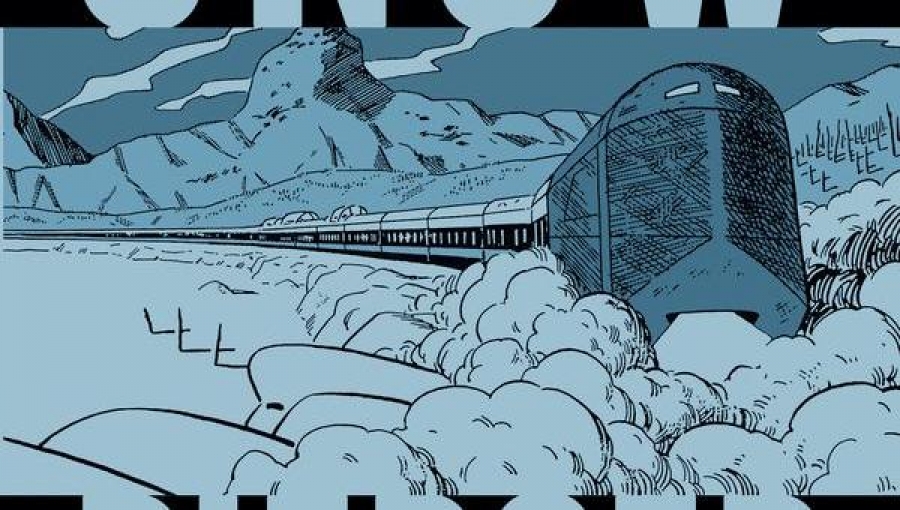Snowpiercer Volume 1: The Escape is the graphic novel from writer Jacques Lob and artist Jean-Marc Rochette, originally published in France in 1984. For its first ever English translation and in honor of the upcoming Weinstein Company movie adaptation starring Chris Evans, Titan Books has published the story in a gorgeous, oversized hardcover edition. I must say I was skeptical about the story at first, having watched the film trailer, which looked like some hack writer said, “Let’s do a post-apocalyptic thriller . . . on a train!” Flipping through the graphic novel offered some consolation, however, with a stunning design typical of Titan Books and Rochette’s stark, black-and-white and, frankly, haunting art. The story itself was still unproven, but if you could judge the book by its cover – in this case a massive, speeding bullet train plowing through a desolate tundra, bearing down on the reader – well . . . let’s just say, I was on board.
The story takes place maybe 30 years after “the cataclysm,” some event, either natural or manmade, that plummeted the world into an eternal winter. Miraculously enough, a luxury train designed to be self sufficient for long periods of time on a track that circled the globe had been recently completed, and so what few passengers could boarded the Snowpiercer and began their destination-less journey to preserve the human race. These survivors, housed in the Snowpiercer’s 1001 cars, endlessly circling the globe, immediately formed a familiar hierarchy, with the well-to-do living in relative luxury in the front of the train, while the tail cars are rolling ghettos, brimming with the underprivileged. We follow a refugee from the tail and a middle car activist as they fight their way through the system and the train itself, pressing towards the front cars and the mythical engine.
There were a number of logistical issues I was prepared to struggle with, but as the story unfolded, my questions were all resolved, and you are left with a social commentary as deft and powerful as the Snowpiercer itself. Some might complain that the story was too heavy handed, but I found the plight of our refugee protagonist, Proloff, engaging and completely compelling. While the trailer for the film adaptation struck me as recklessly effects-heavy, unclear, and generic, the book – thanks in large part toRochette’s marvelous, black-and-white art – is as extraordinary and entertaining as a magic trick. Further, Rochette’s tone and detail provide the perfect accompaniment to Jacques Lob’s desperate story of strife and survival in a ruined world.
Snowpiercer Volume 1: The Escape is an unusually clever and simple tragedy of class warfare and the arrogance and resilience of humanity that manages to be relevant and fresh 30 years after its original publication. Living now, in the years imagined by the author of this book, with our climate woes and growing income inequality, you have to ask yourself, which direction are we headed?

